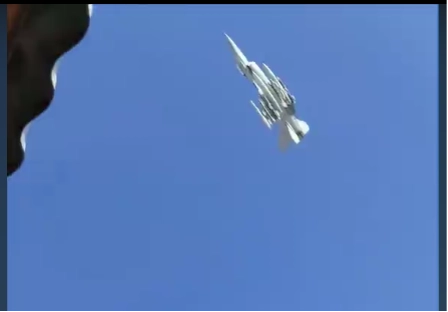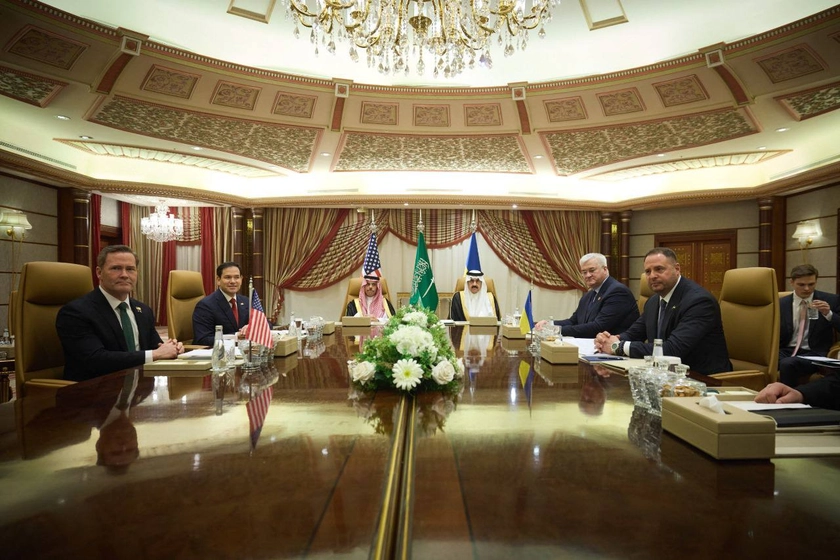As the clock ticks down to the first combat deployment of Ukrainian-piloted F-16 fighters against the Russian Air Force, and with it a possible end to years of Russian glide bomb and missile strikes launched with near impunity against Ukrainian homes and businesses, Ukrainian officials are talking about minimizing risks, unready infrastructure, and sometimes pointing fingers.
Vadym Ivchenko, a member of the Verkhovna Rada committee for national security on July 2 offered the most recent official information on when the US-made aircraft would reach Ukraine’s skies and what they would be doing, saying in a televised interview: “The first F-16s will be with us this month. I believe that in the beginning they will be deployed to defend against enemy missiles, and they won’t operate against targets in Russia.”
JOIN US ON TELEGRAM
Follow our coverage of the war on the @Kyivpost_official.
The United States in May 2023 – more than a year after Russia invaded Ukraine a second time – approved the transfer of dozens of European nation-owned F-16s to Ukraine’s Air Force, along with training for pilots and ground crew. Since then, the Kremlin has taken advantage of its near-total ownership of Ukraine’s skies to step up air strikes, and, in the absence of modern fighter jets to oppose them, to bombard Ukraine from the air almost at will. Since early 2024 the Kremlin has launched close to two hundred long-range missiles and dropped around 3,000 bombs against military and civilian targets, every month.

ISW Russian Offensive Campaign Assessment, March 12, 2025
Washington nevertheless is keeping a tight leash on the reported total of 85 F-16s eventually to be donated by the Netherlands, Denmark, and Norway. On July 1, US congressman Mike Turner (R), chair of the House Committee on Intelligence, criticized the White House for still banning, only days before Ukrainian pilots will start flying the planes in combat, deep strikes into Russia to hit the air bases the bombers fly from to hit targets in Ukraine.

Ivchenko said Kyiv is planning only short-range operations with the F-16 and that attacks against Russian bomber bases are off the table. Currently, he said, the main open questions on how the F-16s once in-theater will be operated is how many long-range missiles will be available and what type, and “what radars the planes will be equipped with,“ he said.
Why this is a question is puzzling since the specifications of the F-16AM/BM Block 20 MLU (Mid-life upgrade) aircraft will be receiving are public knowledge. This revelation only speaks to the unfamiliarity of operating the aircraft and what the actual classified capabilities are, which could easily be determined by talking with experienced pilots from the nations donating the aircraft.
According to open sources, between ten and fifteen Ukrainian pilots training in Romania will have just completed final F-16 checkout flights by the end of June. A smaller number of Ukrainian pilots have completed or are nearing the end of training in Arizona, US Air Force spokespersons have said. The Netherlands on Tuesday formally approved the export of 24 jets to Ukraine’s military, and on Friday Copenhagen announced a core cadre of 50 F-16 maintainers had completed training in Denmark.
Based on those numbers, the Ukrainian Air Force theoretically might be able to launch as many as a dozen aircraft at one time by early July, but wartime realities and pilot training limiting practice to two-ship formations will make F-16 sorties in actual combat much smaller than that, for months, most analysts say.
The normal, optimal F-16 formation size is from two to four aircraft operating together with an experienced pilot who is trained and qualified in leading multiple aircraft as a flight lead in the formation. The aircraft is set up to operate and designed to optimize combat capability without tight and uninformed control from uninitiated personnel on the ground as the MiG-29 and Su-27 are set up for.
Ukrainian officials have warned that the limited quantity of long-sought, high-tech F-16 “Viper“ would require purpose-built ground facilities like bomb-resistant hardened aircraft shelters to stand up to inevitable Russian Air Force attacks, hangers with F-16-standard tools for maintenance, and “clean“ landing strips built to a higher quality than Ukraine’s Soviet-era airfields.
The F-16 was designed for optimal performance in the air rather than for launch from unimproved airfields with grass and gravel on airfield surfaces. It has an engine intake that would suck up ground debris common on Soviet-era runways, having been designed to operate from normally clean airfields that are NATO- and world-standard.
These low-mounted intakes also lead to an inherent difficulty in adversary aircraft detecting it on radar at longer ranges – it is essentially an innate quasi-stealth feature inherent to such design. MiG-29s, however, have protective ground intake devices that redirect the intake air source above the wings to allow operation on dirty surfaces, a feature that greatly contributes to its large radar cross-section.
Operating F-16s on Soviet-style airfields is the equivalent of driving a Lamborghini or Ferrari supercar, designed for very high performance on a road better suited to a Jeep Wrangler or Toyota Hi-Lux 4x4.
Ukrainian MP Mariana Bezhula in a July 2 statement tore into the commander of Ukraine’s armed forces, Gen. Oleksandr Syrsky, for recent Russian air strikes against existing Ukrainian military airfields and accused him and his staff of failing to prepare ground infrastructure suitable for the soon-to-arrive F-16s.
“You have not corrected the situation with the safety of our planes, with air defense. We are still losing them just like that, uncovered, left to the mercy of Russian drones and missiles…without elementary shelters and surveillance. How can the F-16s be here (in Ukraine)? F-16 will not change anything, it will at best be an increase in (stress to the Ukrainian) air defense and a constant target for the Russians,“ Bezhula wrote on her personal Telegram channel.
In a July 3 diatribe, Bezhula doubled down and attacked Ukrainian Air Force leadership, saying “The infrastructure (for F-16s) is not ready. And the attitude (by Ukrainian Air Force Commander Mykola Oleshchuk) towards the training of pilots and other personnel….is inexcusable. (The Ukrainian Air Force attitude is) as if the partners need it, not us.“
Ilya Evlash, Ukrainian Air Force spokesperson, in July 2 comments to Radio NV, said Ukraine’s military “will do everything possible to protect our airfields from strikes by the enemy.“ He said basing for the aircraft and crew would at times be dispersed and concealed, to make it harder for the Russians to find targets to hit. The spread-out nature of F-16 operations, along with a very real Russian threat, will make the difficult job of fielding the new aircraft even more complicated, he said.
“We understand that the enemy will hunt them down. That’s why a whole set of measures is being planned,“ Yevlash said. He said the actual readiness of F-16 ground facilities was a military secret, but the Ukrainian Air Force is aware of the threat and would take “certain steps“ to prevent effective Russian strikes against the new aircraft.
Ukrainian Air Force Brig. Gen. Serhiy Holubstov in June 10 comments said F-16 airframes would be “protected,“ in part, by keeping them in NATO territory if there was no safe place for them in Ukraine. NATO officials later said this did not mean Ukrainian F-16s would fly combat missions from bases inside Atlantic Alliance territory.
You can also highlight the text and press Ctrl + Enter











